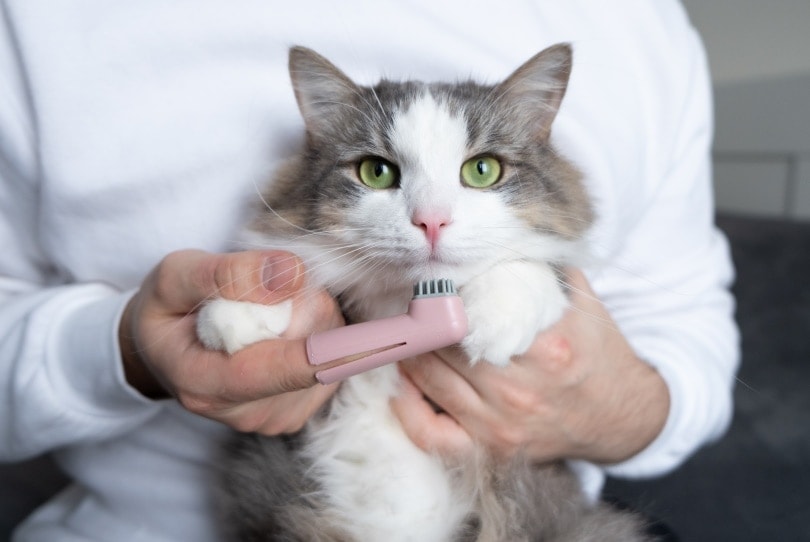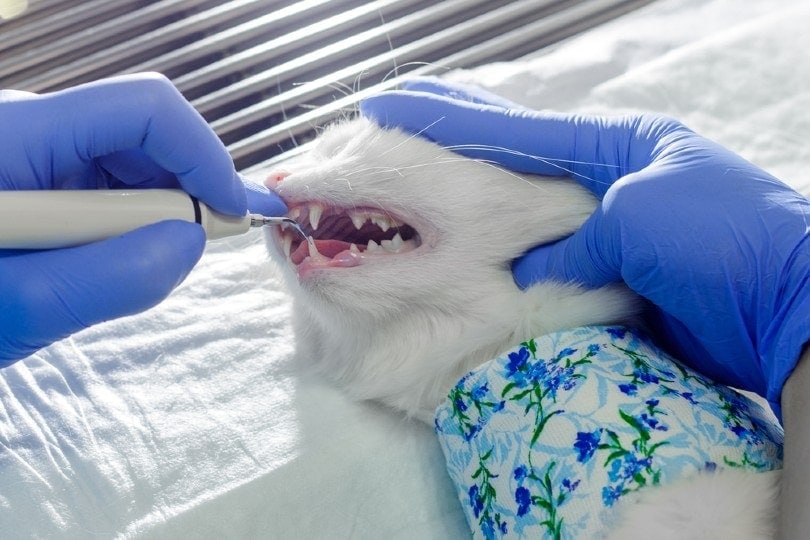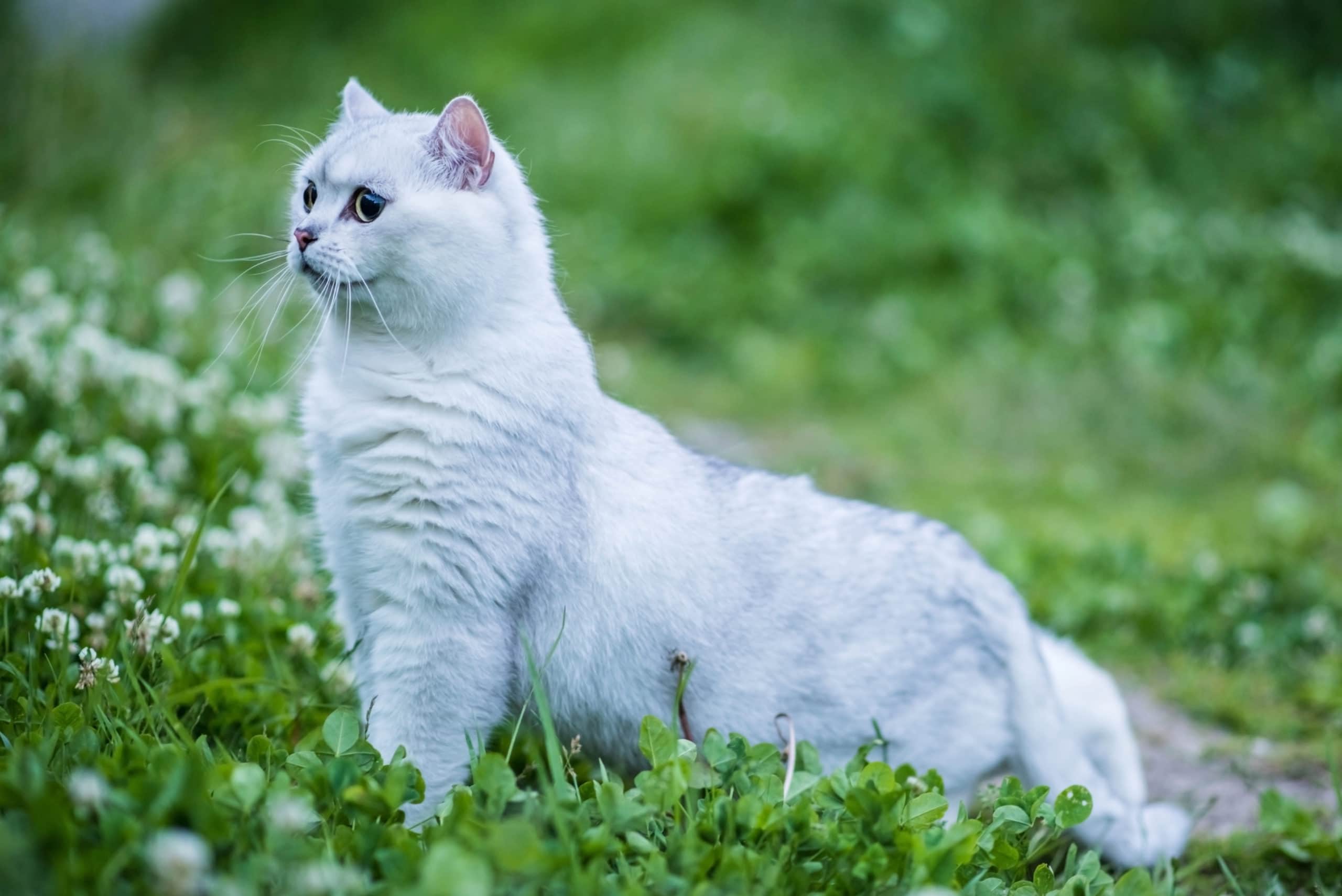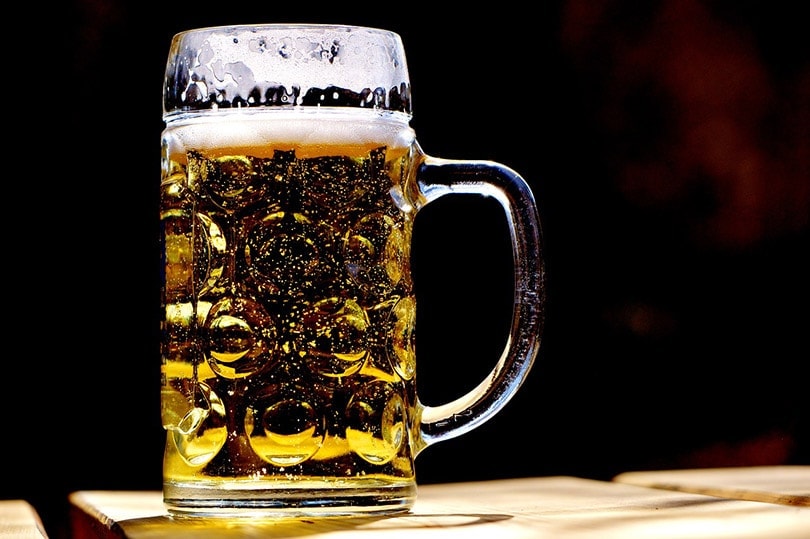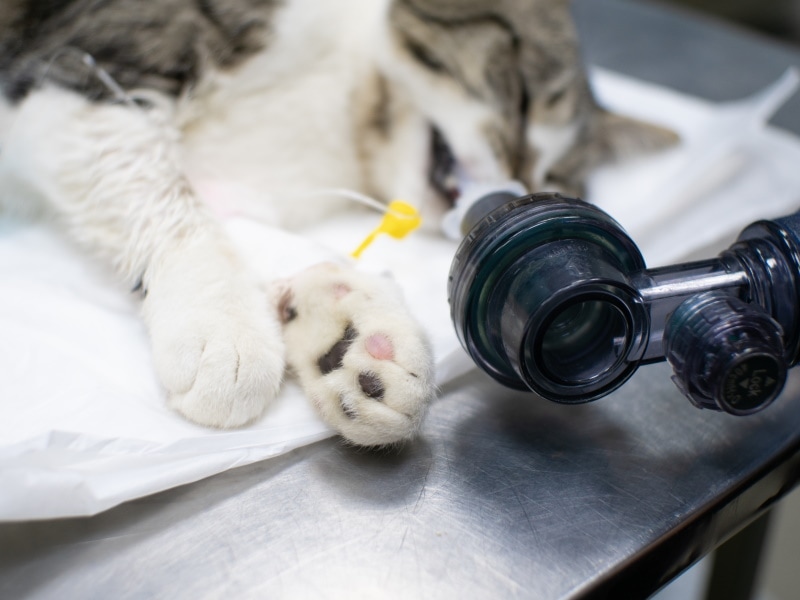Periodontitis in Cats – Vet-Reviewed Signs, Stages, & Prevention
Updated on
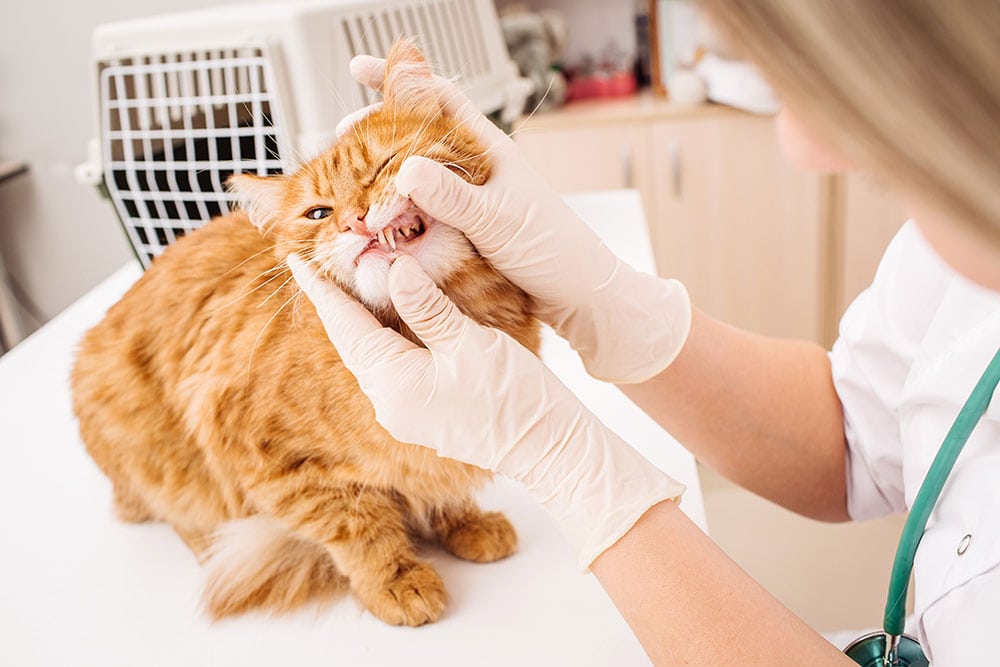
Dental issues are very preventable but also very common in cats, especially in adults and seniors. These problems are so common that studies have shown that anywhere from 50 to 90 percent of cats four years of age and older suffer from some form of dental disease.
Periodontitis, which is also referred to as periodontal disease, is a more advanced form of dental disease that causes a great deal of pain and discomfort and can negatively affect a cat’s quality of life. Keep reading to learn more about this condition and how to have it properly treated.
 What Is Periodontitis?
What Is Periodontitis?
Periodontitis is a severe form of gum disease that occurs as a result of untreated gingivitis. Gingivitis starts as mild but can become severe if not treated, ultimately affecting areas beyond the gum and damaging the soft tissue, progressing down to the underlying bone that supports the teeth.
Gingivitis
Gingivitis is a condition that occurs when a buildup of plaque, a bacteria-harboring sticky film that coats the teeth, accumulates above where the base of the teeth meets the gums or gingiva. If the plaque is not removed, it will continue to accumulate deeper where the gums meet the base of teeth.
Once the plaque has migrated to the subgingival area, the cat’s immune system will often respond to the bacteria, leading to red, swollen, and painful gums.
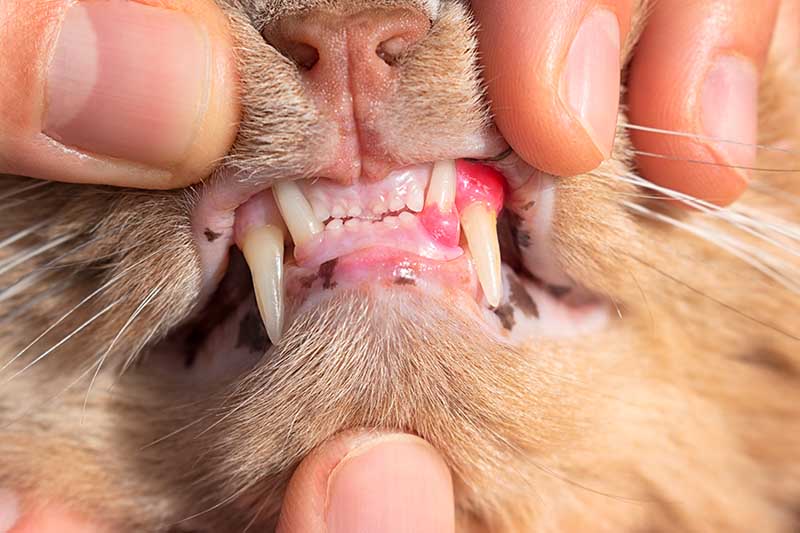
Mild Periodontitis
When gingivitis has been left untreated, periodontitis will occur. When the dental disease has progressed to this stage, it will begin affecting the underlying bone and surrounding tissue, and slight damage will begin to occur between the ligament of the root of the tooth and the socket. In the mild stage, it may be more difficult to detect.
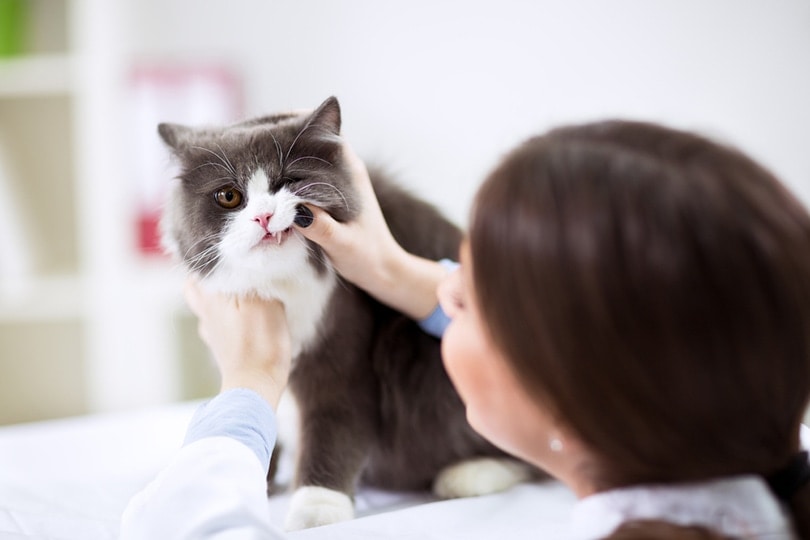
Moderate Periodontitis
When periodontitis escalates to a moderate form of the condition, the damage becomes more apparent and is often irreversible. The deep pockets between teeth and gums are overrun with even more bacteria that attack both the teeth and jawbone. The bacteria can even make its way into the bloodstream.
Advanced Periodontitis
If the early stages of periodontitis are ignored, the disease will advance even further and result in irreversible tooth and bone loss. At the final stage, the gums may ooze pus and blood, chewing will be very painful, bad breath will be apparent, and teeth may begin to come loose and even fall out. Once this occurs, the veterinarian will need to perform an extraction of the affected teeth.
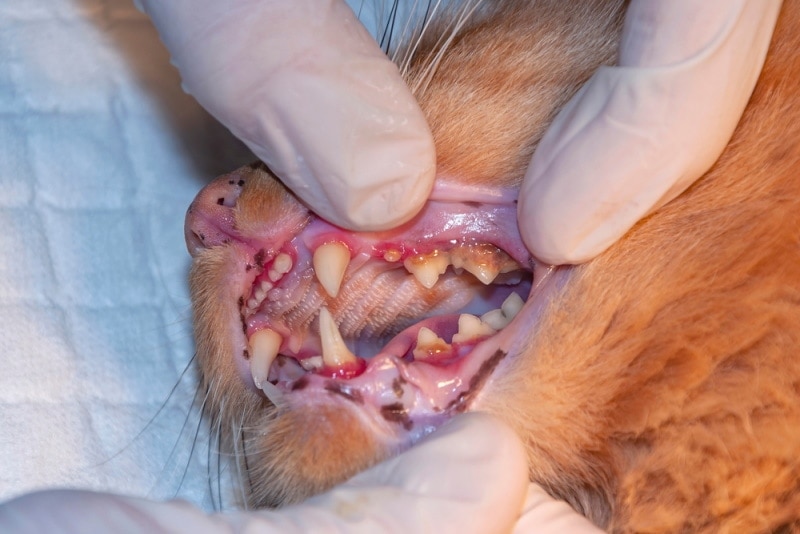
What Are the Signs of Periodontitis?
Gingivitis and periodontitis have some very similar signs, but with periodontitis, they are often much more severe. The common clinical signs of this condition include:
Plaque is a sticky, bacteria-filled film that coats the outside of the teeth. Plaque can be removed if proper oral hygiene is implemented, but if oral care is neglected it can begin to accumulate further. Plaque accumulation is one of the primary causes of gingivitis in cats, but some other factors can lead them to be predisposed to dental disease. The best way to deal with periodontitis is by taking preventative measures and implementing oral hygiene practices. If oral care has been neglected, or if you have brought home a cat that is already suffering from periodontitis, it will need to see a veterinarian for prompt treatment. This condition can not only significantly worsen and affect their quality of life, but it’s very painful and should be treated as soon as possible to ensure they get relief. The veterinarian will need to perform a physical examination to evaluate the severity of the disease and X-rays will be completed to definitively look at the damage it has caused to the teeth and underlying bone. To treat periodontitis, the veterinary staff will need to perform a dental cleaning under general anesthesia. They will remove plaque and mineral buildup by scaling and polishing the teeth. They will try to save any teeth that are capable of saving and may have to perform extractions in more severe cases. Recovery after dental treatments often goes very smoothly. If teeth were extracted, your vet may prescribe medications to prevent infections, and manage any pain or inflammation. A follow-up exam may be necessary to see how the healing process is going. You will be given instructions on how to properly care for your cat upon taking them home. Prevention is key for any dental problems, and this can easily be done by routinely brushing your cat’s teeth and cleaning their mouth. The teeth and gums are much more likely to remain healthy if plaque is regularly brushed away before it can build up and lead to gingivitis. It’s generally recommended that you set aside time to brush your cat’s teeth about 3 times per week. It’s a good idea to get them acclimated to this starting at kittenhood to prevent any behavioral trouble during the process. The most effective way to reduce any visible plaque that you’ve noticed at home is by gently brushing your cat’s teeth and keeping it up regularly if your cat can tolerate it well. There are plenty of toothbrushes and toothpaste available on the market that is designed specifically for cats. You should also consider taking your cat to the veterinarian to have their dental hygiene evaluated to see if there is a need for a dental cleaning to be performed by the veterinary staff. It can be difficult to remove plaque that has accumulated heavily, and a dental cleaning may just do the trick. Periodontitis can easily reoccur, so regular brushing is strongly recommended after the treatment. Your veterinarian will discuss the best ways to go about preventing recurrence in your discharge instructions. You will also want to have your cat’s teeth examined by their vet at least once per year. Periodontitis is a severe but preventable dental disease that occurs when gingivitis is left untreated. Not only should cat owners prioritize proper dental care at home to prevent plaque buildup, but they should also keep up with regular veterinary visits so their cat’s oral hygiene can be evaluated and treated as needed. If you ever have any questions about your cat’s dental health, don’t hesitate to contact your veterinarian for further information. Featured Image Credit: Presslab, Shutterstock
What Are the Causes of Periodontitis?
Factors That Lead Periodontitis
How Do I Care for a Cat with Periodontitis?

How Can I Prevent My Cat from Getting Dental Disease?
My Cat Already Has Noticeable Plaque, What Can I Do?
Can Periodontitis Reoccur After Treatment?
Final Thoughts

 What Is Periodontitis?
What Is Periodontitis?